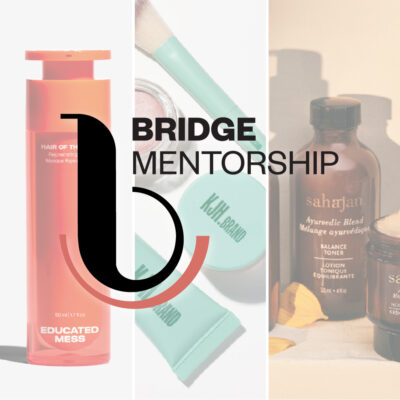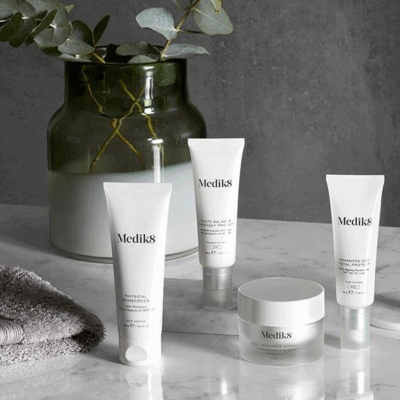
Themes To Watch As Brands Contend With The End Of The Beauty Boom
Insights firm eMarketer has declared, “The end of the beauty boom is in sight,” and Oliver Chen has a pretty good idea of the reasons why.
“What we see in terms of consumer behavior has a lot to do with different ‘C’ words, a consumer that’s being choiceful, a consumer that’s choosing to skip tricks and a consumer that’s being highly considered. This consumer is looking for newness and is under a lot of pressure,” said the retail analyst at global investment bank TD Cowen and adjunct professor at Columbia Business School speaking at Beauty Independent’s Beauty Loves LA event last month. “Things are normalizing across the sector and…companies are facing a little bit of pressure.”
Chen forecasts skincare sales will advance a mid-single-digit percentage this year as science-backed products, injectables and personalization grow. He anticipates makeup sales will remain flat, haircare sales will progress in the mid-single digits, and fragrance sales will accelerate in the mid-to-high single digits. He pointed to niche fragrance brands driving demand in the fragrance category, where he foresees a mergers and acquisitions bump this year, and the skinification of haircare trend enlarging to propel haircare sales.
For 2024, market research firm Circana’s data showed that fragrance sales were up 12% in the prestige market and 9% in the mass market in dollar terms. Skincare was up 2% in prestige and 1% in mass; makeup increased 5% in prestige and was down 3% in mass; and haircare jumped 9% in prestige and 3% in mass.
Along with consumer behavior shifts, Chen argues the traditionally resilient beauty industry’s cooldown is tied to production innovation and newness erosion. According to market research firm Mintel, the beauty industry was at an all-time low for new product launches last year, with 46% of product launches considered genuinely new rather than line extensions or relaunches. In 2015, that percentage was 54%. Chen explained that high raw material costs, market saturation, consumer preferences for minimal routines and a focus on value are behind the product launch lull.
Beauty companies’ stock performances reflect the cooldown. E.l.f. Beauty, Ulta Beauty, Bath & Body Works, Sally Beauty, Estée Lauder, L’Oréal and Coty shares have dropped an average of 25% since January last year. Estée Lauder, Shiseido and Coty sales plunged in the most recent quarter. L’Oréal’s sales grew, but it underperformed Wall Street expectations.
“Lauder has been going through a lot of change,” said Chen. “We’re looking forward to new management, but rethinking how they go direct to consumer is a big opportunity. With Coty, we’ve seen a little more softness with mass and drug.”
E.l.f. is feeling the beauty pullback, too. On Thursday, the company’s stock was down around 65% from its 52-week-high after it cut its guidance and registered a 36% reduction in profit. It attributed its slippage to Los Angeles wildfires and uncertainty about TikTok’s fate in the United States. E.l.f. is now expecting between $1.3 billion and $1.31 billion in full-year sales, down from its previous prediction of between $1.32 billion and $1.34 billion.

TD Cowen is cautiously optimistic about E.l.f.’s future performance and remains bullish on its core philosophy. “At E.l.f., it’s been a lot about speed and engagement. They’ve been really creative and culturally relevant,” said Chen. “What we see with E.l.f is a very Zara-like model in terms of what they do and how they innovate quickly.”
TD Cowen recommends that beauty companies navigating the bumpy beauty environment pay attention to four big themes. The first is the blurring of categories and price tiers, including the integration of beauty, wellness, healthcare and aesthetics, and mass and class retail merchandising. The second is the continued strength of social selling channels, the third is the spread of artificial intelligence-driven personalization, and the fourth is the connection between physical and digital retail via loyalty programs.
“I don’t think the consumer cares about categories that historic retail cares about,” said Chen. “So, it’s about trading up and down with mass and prestige. That being said, there’s a place for everything from a Violet Grey to a Saks to a Target. Showing up as what makes sense authentically to you is important.” Referring to prescriptive AI capabilities, he added their applications will be pivotal in every step of the purchasing journey to appeal to and retain customers.
Regardless of TikTok’s American presence, which TD Cowen views as not likely to disappear, the investment bank believes short-form video is here to stay to draw and engage with new customers. TikTok’s average engagement rate is better than Instagram’s, at 2.6% versus 0.4%, respectively, according to data from social media analytics firm Rival IQ. TD Cowen emphasizes brands and retailers should leverage compelling and authentic content to maintain strong bonds with customers and move to own their relationship with them through websites, apps or other platforms they have greater control over.
“It’s a tricky new era for brands where conversational commerce is so important,” said Chen. “Brands in many ways are taking the place of churches, and the whole debate around values is important for brands to acknowledge.”
Click here to learn more about exhibiting at BITE NYC 2025.






Leave a Reply
You must be logged in to post a comment.